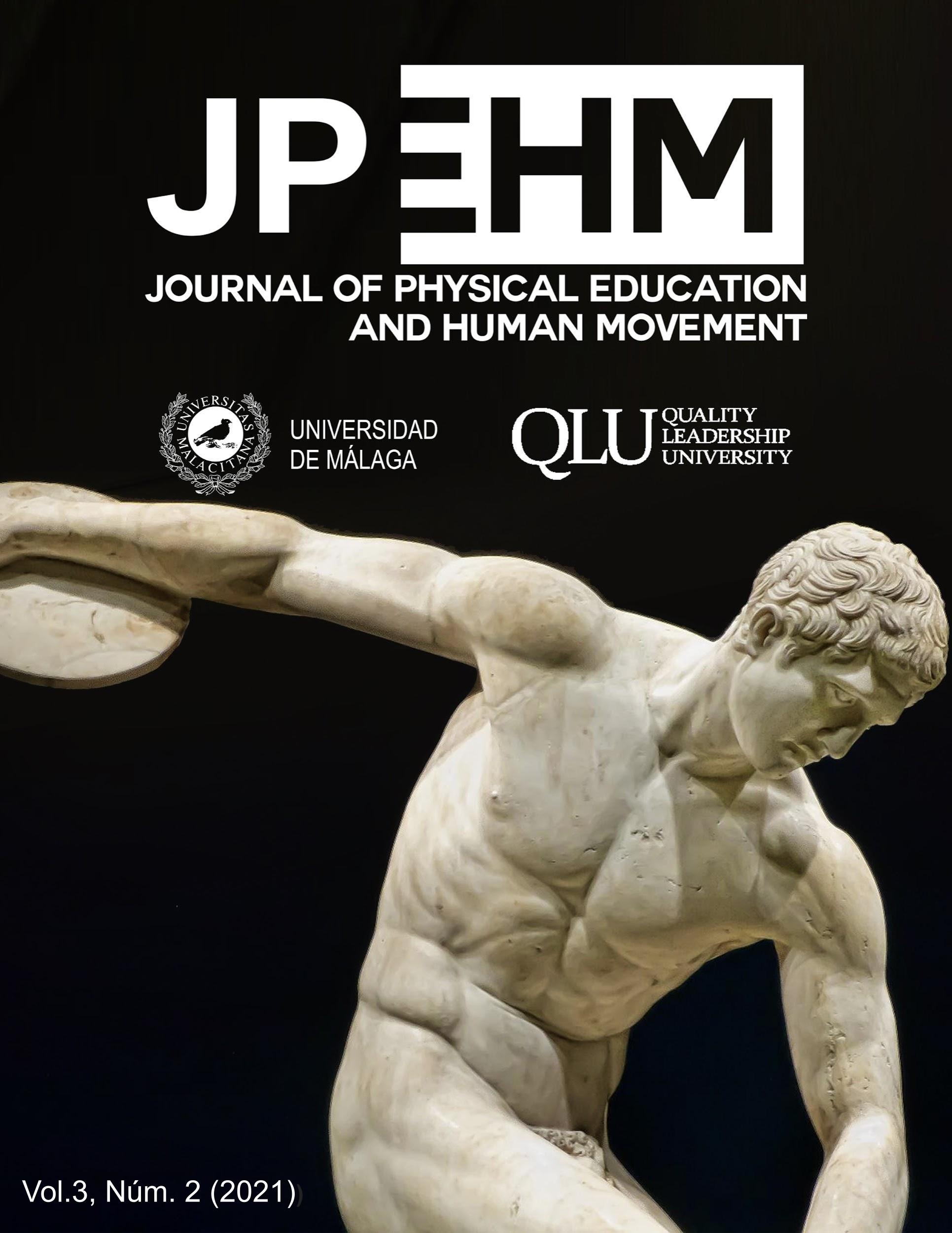Calisthenics: returning to classic methods of physical conditioning
DOI:
https://doi.org/10.24310/JPEHMjpehmjpehm.v3i212974Keywords:
body weight, fitness, training, sport, calisthenics parksAbstract
Considering the current context through which physical activity is mischievous in our society in which it is about imposing a certain type of training method with a more focused objective towards aesthetics due to existing patterns, this article presents both a description and a reflection of a different alternative such as the ancient calisthenics that turns out to be an affordable option for everyone and that, even though it has some disadvantage requires a great diversity of optimal benefits both at a physical and physiological level that are fundamental for good maintenance of health in a globalized environment in which diseases derived from sedentary lifestyle are a constant fact among its inhabitants.
Downloads
Metrics
References
Alijas, R. y Díaz, A. (2015). Calistenia: Volviendo a los orígenes. EmásF: Revista Digital de Educación Física, (33), 87-96.
Coffey, V. G. & Hawley, J. A. (2007). The molecular bases of training adaptation. Sports Med, vol (37), 737-763. DOI: 10.2165/00007256-200737090-00001
Cuadrado, G., Pablos. C. y García, J. (2006). Aspectos metodológicos y fisiológicos del trabajo de hipertrofia muscular. Wanceulen SL.
Erdem, A. & Genc, H. (2020). The Effect of Calisthenics Exercises on Body Composition in Soccer Players. PROGRESS IN NUTRITION, vol (22), 94-102. DOI: 10.23751/pn.v22i1-S.9797
Fernandes A., Moreira, R.A., Gomes de Souza, R., Figueira, A. & Sales, A. (2017). High intensity interval training with bodyweight: the new calisthenics? Manual Therapy, Posturology & Rehabilitation Journal, vol (15), 1-4. DOI: 10.17784/mtprehabjournal.2017.15.448
González-Badillo, J. J., Marques, C. & Sánchez-Medina, L. (2011). The importance of movement velocity as a measure to control resistance training intensity. J Hum Kinet, vol (29) 15-19. DOI: 10.2478 / v10078-011-0053-6
González-Badillo, J.J. y Gorostiaga. (2002). Fundamentos del entrenamiento de la fuerza. Inde
González-Badillo, J.J. y Ribas, J. (2002). Bases de la programación del entrenamiento de fuerza. Inde
Guadalupe-Grau, A., Fernández-Elías, V. E., Ortega, J. F., Dela, F., Helge, J. W., & Mora-Rodriguez, R. (2017). Effects of 6-month aerobic interval training on skeletal muscle metabolism in middle-aged metabolic syndrome patients. Scandinavian Journal of Medicine & Science in Sports, 28(2), 585–595. doi:10.1111/sms.12881
Harrison, J. (2010). Bodyweight Training: A Return To Basics, vol (32), 52-55.
Kraemer, W. J. & Ratamess, N. A. (2004). Fundamentals of resistance training: progression and exercise prescription. Med Sci Sports Exerc, (vol) 36, 674-688. DOI: 10.1249/01.MSS.0000121945.36635.61
Polo, S. (2020). Valoración del orden óptimo entre una dominada completa y una straddel para un máximo rendimiento en calistenia. Trabajo de fin de grado. Universidad de Zaragoza. https://zaguan.unizar.es/record/98941
Sánchez, M. (2017). Factores determinantes del rendimiento en el ejercicio de dominadas y efectos del entrenamiento concurrente de fuerza y resistencia. Tesis doctoral. Universidad de Sevilla. Recuperado de: https://rio.upo.es/xmlui/handle/10433/4783?show=full
Scott, C., Beliveau, C., Desmond, K. & Rollins, E. (2016). Total energy costs of 3 all-out Tabata routines: calisthenic, plyometric and resistance exercises. European Journal of Human Movement, vol (37), 49-55.
Tabata, I. (2019). Tabata training: one of the most energetically effective high-intensity intermittent training methods. The Journal of Physiological Sciences. doi:10.1007/s12576-019-00676-7
Tillin, N.A., Pain T.G. & Folland, J. P. (2012) Contraction type influences the human ability to use the available torque capacity of skeletal muscle during explosive efforts. Proc. R. Soc. B, vol (279), 2106–2115 DOI: 10.1098/rspb.2011.2109
Velasco-Orjuela, G., Domínguez-Sánchez, M., Hernández, E., Correa-Bautista, J., Triana-Reina, H., García-Hermoso, A., Peña-Ibagón, J., Izquierdo, M., Cadore, A., Hackney, A. & Ramírez-Vélez, R. (2018). Acute effects of high-intensity interval, resistance or combined exercise protocols on testosterone – cortisol responses in inactive overweight individuals. Physiology & Behavior, vol (194), 401-409. DOI: 10.1016/j.physbeh.2018.06.034
Downloads
Published
How to Cite
Issue
Section
License
Aquellos autores/as que tengan publicaciones con esta revista, aceptan los términos siguientes:
- Los autores/as conservarán sus derechos de autor y garantizarán a la revista el derecho de primera publicación de su obra, el cuál estará simultáneamente sujeto a la Licencia de reconocimiento de Creative Commons que permite a terceros compartir la obra siempre que se indique su autor y su primera publicación esta revista.
- Los autores/as podrán adoptar otros acuerdos de licencia no exclusiva de distribución de la versión de la obra publicada (p. ej.: depositarla en un archivo telemático institucional o publicarla en un volumen monográfico) siempre que se indique la publicación inicial en esta revista.
- Se permite y recomienda a los autores/as difundir su obra a través de Internet (p. ej.: en archivos telemáticos institucionales o en su página web) antes y durante el proceso de envío, lo cual puede producir intercambios interesantes y aumentar las citas de la obra publicada. (Véase El efecto del acceso abierto).







15.png)
